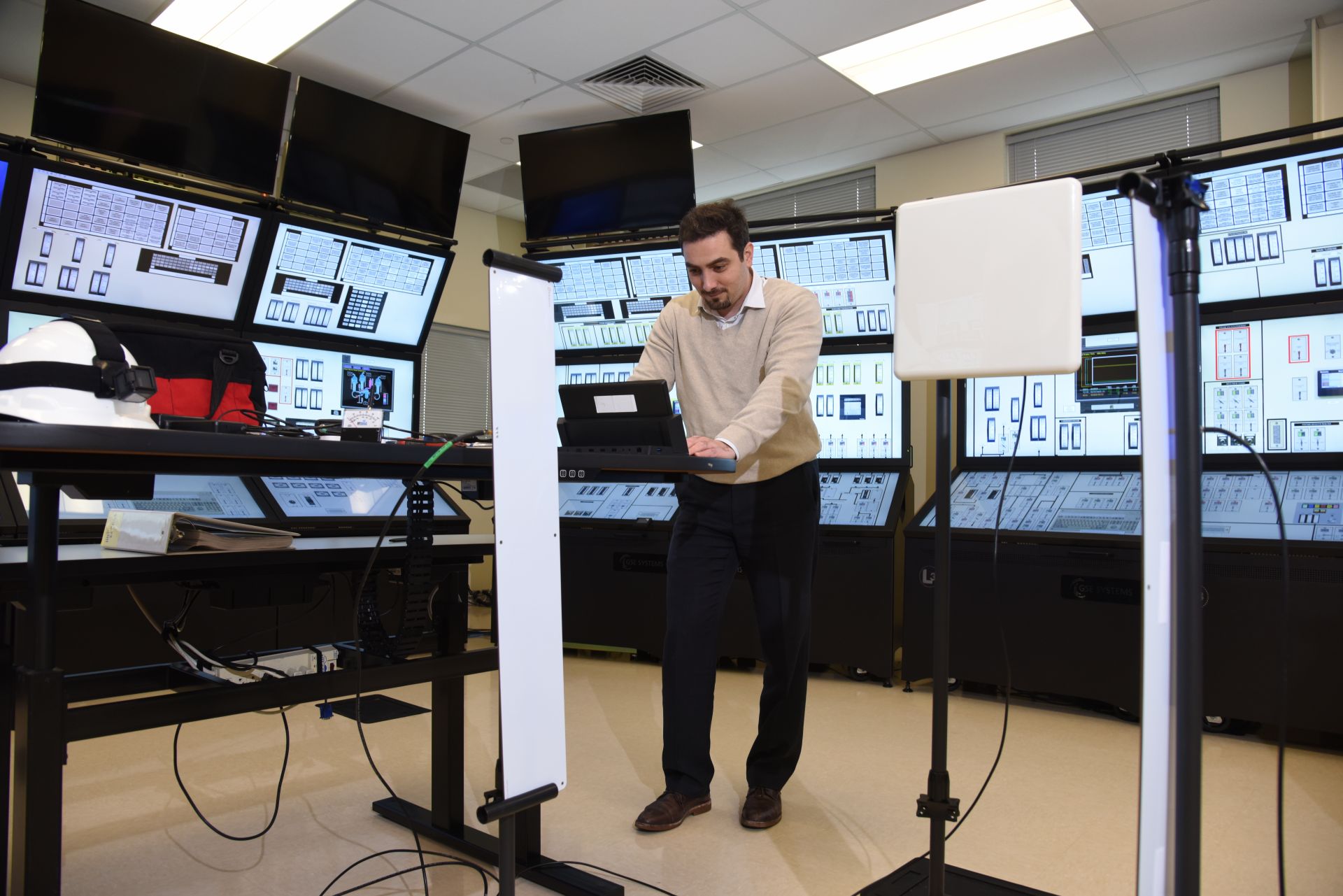John Wagner, director of Idaho National Laboratory and president of Batelle Energy Alliance, delivered the keynote address at the 26th Annual Nuclear Generator & Supplier Executive Summit. (Photo: USA)
The 26th Annual Nuclear Generator and Supplier Executive Summit, hosted by Utilities Service Alliance (USA), was held at the Coeur d’Alene Golf and Spa Resort in Idaho from June 28 through July 1. About 375 attendees were present for this year’s meeting, themed “Nuclear’s Next Wave” which featured presentations and discussions on emerging nuclear technologies and designs, as well as an integrated tradeshow with about 50 industry suppliers exhibiting products, services, and ideas.
The U.S. Department of Energy’s Light Water Reactor Sustainability Program, led by Idaho National Laboratory, works closely with utilities to improve outage efficiencies and enable nuclear to go “toe-to-toe economically” with other energy sources.

Working in INL’s Human Systems Simulation Laboratory, senior R&D scientist Ahmed Al Rashdan co-developed the Advanced Remote Monitoring project for the LWRS Program.
There are numerous similarities between auto racing pit crews and the people in the nuclear power industry who get us through outages: Pace. Efficiency. Diagnostics. Teamwork. Skill. And safety above all else.
To Paul Hunton, a research scientist at Idaho National Laboratory, the keys to successfully navigating a nuclear plant outage are planning and preparation. “When you go into an outage, you are ready,” Hunton said. “You need to manage outage time. You want to avoid adding delays to the scheduled outage work because if you do, it can add a couple million dollars to the cost.”
Hunton was the principal investigator for the September 2019 report Addressing Nuclear Instrumentation and Control (I&C) Modernization Through Application of Techniques Employed in Other Industries, produced for the U.S. Department of Energy’s Light Water Reactor Sustainability (LWRS) Program, led by INL. Hunton drew on his experience outside the nuclear industry, including a decade at Newport News Shipbuilding.
Material cost reduction may be realized through cost-effective procurement scenarios, such as application of commercial grade dedication, reverse engineering, and electronic component repairs.

The Utilities Service Alliance’s organizational banners.
The Utilities Service Alliance (USA) was founded in 1996. Current membership stretches from coast-to-coast and includes eight utilities and nine nuclear stations: Energy Northwest, Columbia; Luminant, Comanche Peak; Indiana Michigan Power Company, Cook; Nebraska Public Power District, Cooper; DTE Energy, Fermi; Xcel Energy, Monticello and Prairie Island; STP Nuclear Operating Company, South Texas Project; and Talen Energy, Susquehanna. These plants represent 14 reactors (six boiling water reactors and eight pressurized water reactors) and more than 15,000 MWe of generation.
The USA Material Cost Reduction (MCR) project kicked off in January 2017. The Nuclear Energy Institute’s Delivering the Nuclear Promise initiative was in full swing as the utilities’ chief nuclear officers created multiple focus areas for cost reductions at the plants.






